1947
 In 1947, a parish-wide development and planning survey on the status of Jefferson Davis Parish was conducted. Photos of all the schools in the parish school system were featured in the report, which is available in the Jeff Davis Public Library. A print of this photo is available in the archives of the Jennings Carnegie Library.
In 1947, a parish-wide development and planning survey on the status of Jefferson Davis Parish was conducted. Photos of all the schools in the parish school system were featured in the report, which is available in the Jeff Davis Public Library. A print of this photo is available in the archives of the Jennings Carnegie Library.This aerial photo (click to enlarge) was taken in early 1947 pursuant to the parish-wide survey and shows many interesting details of life in Hathaway at the time (clockwise from the bottom left corner):
(1) The Catholic chapel was a rural ministry of Our Lady Help Catholic Church in Jennings. The chapel would be hit by a tornado that lifted it off its piers and desentegrated it in 1949. A new church on a foundation would be built in 1951. During the period of construction of the new church, Mass was held at the school.
(2) The cinder block building that stood for many years as a storage building on the south driveway entrance to Hathaway High School began as the school's Agriculture classes and vocational shop. Several years after the parish Extension Service's canning center (built west of the shop after this photo was taken) closed and the building transferred to the school, Agriculture classes were moved to that building.
(3) The school's softball diamond was on the northwest corner of the track infield (look closely for the backstop). Hathaway never fielded a parish team, but many a game were played. The hour lunch recess was a perfect time for a game. Often it was the older kids playing and the younger kids were the spectators. Sometimes even the faculty would play. Melvin LeBlanc remembers Principal Groth (principal from 1945 to 1971) was a regular on the field. A softball diamond complete with lights later built on the southwest corner would not be put up until the early-1960's.
(4) The west side of the Gym is without the dressing room and music room addition, which would not be built for another 6 years. The school had only been open 8 years.
(5) The initial structure of the cafeteria (refectory as it was called) that stands today had only been there two years--a tornado destroyed the previous cafeteria.
(6) The cottage on the north side of the driveway to the school was a house rented to Principal Groth, by Mr. Rampimeyer, whose house is just north of the school;
(7) Looking closely at the front lawn, there appear to be footprints of the school houses or remnants of pathways leading from the school houses still visible.
(8) The driveway on the highway just north of the school is to Mr. Rampimeyer's house and blacksmith shop -- area farmers needing any type of metalworks could find help here. From sharpening plows to making a pin to fasten the plow to the tractor. He could even help with wagon and later, car metalworks too.
(9) The path running along the newly paved Jennings-Elton highway (more below);
(10) The store on the northeast corner of the intersection was called Bucklin's for many years (later Avant's, still later, Ta's, and now Butchie's Corner).
(11) Next to the Bucklin store a Phillips 66 filling station would be built a few years after this photo was taken. The station was owned by Mr. Adam LeBlanc. He leased the land for .01 cent a gallon. Gas at that time was about .15 cents-a-gallon. Mr. George Broussard ran the station and was a jackleg mechanic who could fix anything. The station was a minor-repair and maintenance outfit. They also sold tires, for a good price.
 Mr. Melvin LeBlanc remembers working at the station when his father and mother were recovering from a head-on collision they had near Welsh. One day, a regular came in for four new tires. Mr. LeBlanc wanted to make sure the man would not second guess his purchase, so he asked him to go get a quote from More Mileage Tire Shop, the volume dealer in Jennings.
Mr. Melvin LeBlanc remembers working at the station when his father and mother were recovering from a head-on collision they had near Welsh. One day, a regular came in for four new tires. Mr. LeBlanc wanted to make sure the man would not second guess his purchase, so he asked him to go get a quote from More Mileage Tire Shop, the volume dealer in Jennings.
The man came back the next day and Mr. Melvin gave him a piece of paper to write down the price More Mileage had given him. At the same time, Mr. Melvin wrote his quote down on a piece of paper and handed it to the gentleman. The man's face was priceless. He asked Mr. Melvin how he could beat a volume dealer. All Mr. Melvin told him was that he sent him away so he could see that he was getting a better deal with him. He knew he could beat their price. What he didn't tell him was that he had a discount distributor in Florida that did not charge shipping for orders over 200 pounds. It didn't take too many tires to make the minimum.
(12) The store that is caddie-corner from Bucklin's store and just across Highway 102 on the south side of the school belonged to Alec Gary (note the worn path through the fence opening--children made many trips across the street for candy at that store).
[[Please post a comment to add to the notations above or correct any inaccuracies in the above description. Also, if there is anything in this photo you find noteworthy, please add a comment.]]
At the time of the photo, the Jennings-Elton road was still being paved north of Hathaway. You can still see the path that people took north toward Elton before the road was built. Limitations on materials during the war slowed road paving for several years after the war. At the bottom left corner, follow the path running across the barnyard in a northeasterly direction to the intersection. For many years, it was common to have trails running through fenced property. The courtesy of the landowner was returned by those passing through by ensuring the gate was closed.
Cross the intersection and pick up again at the north edge of the driveway. Note the slight bend of the trail from the road and then straightening to the north, parallel to the highway. That path likely came from Elton Road which for many years was the route to Elton from Jennings. Elton Road was the postal and stage coach route that ran from Jennings across the Grand Marais to Raymond and then to China on into Elton. The other north-south trail ran along the path that Highway 102 runs today and instead of a perpendicular turn at Panchoville Road, bent westerly to join the north-south path in the photo at a point close to where Ringuet Road crosses Highway 26 today. Both of these north-south trails had diagonal and perpendicular off-shoot trails that ran to places like Mounic's landing on Bayou Nezpique to the east or Simeon Gary's store on the Grand Marais to the west and even to other villages like the trail that ran through the Tupper barnyard to Kinder.
Paving the Jennings-Elton highway had begun before World War II but was discontinued in favor of the war effort. At that time, this Highway was initially known as Louisiana Highway 25 (not 26 as it is today). In 1936, it was paved about a mile out of Jennings, then gravel to Grand Marais Road, about 5 miles south of Hathaway. From Grand Marais Road north for about six miles, the road was paved. Bans were lifted in 1946 and Governor Jimmie Davis delivered on his promise to continue paving projects in earnest. It was scheduled for completion in late-1947 or early-1948.

Aside from U.S. Highways 90 and 190, Highway 25 was the only paved highway in the parish. Three-fourths of the farm roads in the parish were gravelled roads, including Highway 102 as seen in the photograph above. The cars that were running these roads were older models. No new cars had been produced since rationing began for the war effort. Rationing did not end until 1946 and the first cars produced since the beginning of WWII began coming off the assembly lines in 1947 and retailed for $1300. Gas was .15 cents-a-gallon. The average salary was about $2500 and a new house cost $6500.
Speaking of WWII, this photo was taken when post-WWII Cold War world politics was heating up. Communist were becoming the ruling party in Poland and Hungary. America responded with the Truman Doctrine ($400 million in aid to Turkey and Greece to prevent Communist leanings) and the Marshall Plan was introduced to rebuild allies in Europe after the destruction of WWII. The "Red Scare" arose during this time with "loyalty investigations" of Federal employees and Hollywood blacklisting was making the news.
Like most Americans, electricity was delivered to most homes in Hathaway before television signals arrived. By 1947, the Rural Electrification Administration had brought electricity to 307 households along Highway 25 from Jennings to Elton and had about 90 miles of distributory lines along that route powered by Gulf States Utilities. As the photo above illustrates, power lines run up the east side of Highway 25. The lines then run west at Pine Island highway, but there are no lines running east toward Panchoville and there would not be until well after television signals were being broadcast.
In 1947, the first television station west of the Mississippi River began broadcasting in Los Angeles. WDSU began broadcasting television in New Orleans in 1948. There were no signal strength regulations then, so with a good antenna, a TV receiver in Hathaway could have watched the premiere of Howdy Doody or Meet the Press. But homes in Hathaway, like most of America, did not have a TV until the early-1950's. The earliest known TV in Hathaway was at the home of Orville Phenice, who first saw TV in a storefron in Kansas City, Missouri while visiting relatives. He bought a TV and antenna directly upon returning home. From the time of the photo above, it would be 5 more years (1952) before Lake Charles had a UHF station (Channel 25, KTAG and Channel 29, KIKS) and 7 more years (1954) before a UHF station (Channel 7, KPLC) was opened there.
1947 was also a year of many firsts -- tubeless tires, Tupperware, microwave ovens, Frisbee, Slinky, LPs (predecessor to CDs and penultimate to the MP3), Polaroid cameras, even the first mobile phone (from a moving car to an airplane). Chuck Yeager broke the sound barrier producing the first sonic-boom. Other happenings include -- Henry Ford died leaving a $600 million ($5.5 Billion today) estate and Stephen King was born. The Roswell UFO incident also occurred in 1947 and drive-in movies were just coming into the mainstream.
Interesting times.
The State Library of Louisiana offers the aerial photo from 1947, above, for sale in a glossy 8x10 or 5x7. Send an inquiry by email to diglib@lsu.edu. Request an order form be emailed to you. In the blank on the form that asks for the identification number, write "hp003382". You can also order a high-resolution .tif-file that can be emailed to you--this will allow you to zoom in and see the backstop on the northwest side of the track infield and the cows grazing in the barnyard across from the school. A print copy is also available for viewing in the Jennings Library archives.
1956
In 1956, this photo was taken as part of the U.S. Geological Survey.
(zoom with your browser's zoom function).

There are several notable differences in the Hathaway High School landscape in the 9 years since the aerial photo of 1947, above, was taken.
(1) The music room on the west side of the gym has been added.
(2) The Agriculture Building, which was originally built as a canning center in 1949-50 sits along Highway 102 just west of the cinder block shop.
(3) The St. Lawrence Catholic Church was built in 1951 after a windstorm in 1949 destroyed the chapel.
(4) Principal Groth purchased the northern corner of the school property, built a house for he and his family, and moved out of the cottage owned by Mr. Rampmeyer about 1950.
(5) The Hathaway Cafe is open for business at the school's north driveway on Highway 26. About 1952, a small cafe was built. It was owned by Mr. Hilliard Broussard and run by his wife (the sister of Mr. Earl Walker) at the corner of the driveway for Hathaway High and the highway headed north (this photo was taken only for a few years before he sold it and it was moved a mile south). The cafe served hamburgers, cola, pies for dessert, and ice cream sandwiches.
When asked what the cafe served, Ms. Millie Compton remembers the Dr. Pepper she drank every day after school. Mr. Melvin LeBlanc remembers doing the books for the lady that ran the cafe in exchange for free meals. Mr. Melvin also remembers students were not allowed to leave campus to eat at the cafe. One day Mr. Melvin was approached by a daring classmate that offered to buy ice cream sandwiches if they would come with him. When Mr. Melvin was hesitant, his classmate offered to take the risk. When he came back with the ice cream sandwiches, they knelt below the windows outside the Home Economics department to eat them. Ms. Anderson (later Ms. Brown) must have heard or seen them. She surprised them and told them to enjoy their ice cream because when they finished, they were to go to the principal's office. Mr. Groth asked them if they wanted three paddles or 1000 lines. The first took the lines and that made it easier for the others. If the first had taken paddles, no way the others could have taken lines.
Some time ago I found a print copy of another aerial
 photo of Hathaway taken about 20 years later. I am in search of a better image for this photo. I date this photo in the late 1960's based on how full the trees that were saplings in the earlier picture, the Ag building, the baseball diamond (installed in the early-1960's), and the length of the car parked in front of the cafeteria.
photo of Hathaway taken about 20 years later. I am in search of a better image for this photo. I date this photo in the late 1960's based on how full the trees that were saplings in the earlier picture, the Ag building, the baseball diamond (installed in the early-1960's), and the length of the car parked in front of the cafeteria.
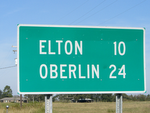
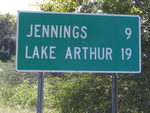
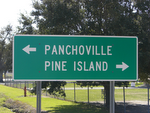
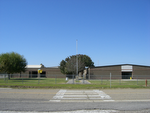
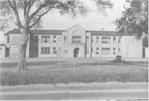
No comments:
Post a Comment